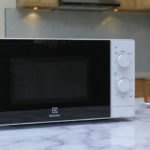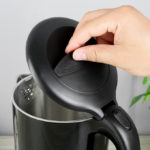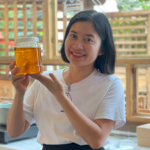As a businesswoman and housewife, while frying food, Mrs. Hang often collects a lot of leftover oil. Previously, women usually poured the oil into jars and threw them in the trash. But since knowing how to use leftover oil combined with lye (NaOH) to make soap, Mrs. Hang has found an economical and environmentally friendly way to deal with leftover oil.
“Soap, once finished, has the ability to create foam and clean well. If we don’t like to use it to wash hands and feet, we can use it to clean the bathroom, toilet, which will also be clean and fragrant,” Mrs. Hang said.
Soap is completely safe when made with the right formula and method, however, the ingredient NaOH can be dangerous if not handled with care, so it is recommended that you follow the safety precautions. You should wear goggles, gloves, masks, and preferably long-sleeved shirts and pants to avoid splashing lye on your body.
When preparing lye at home, please choose a well-ventilated area. Do not prepare lye inside the house or in a closed room, and do not let pets or young children come near the soap-making area. If you are splashed with soap or lye on your skin, immediately wash it off with cold water.
The soap-making utensils should be used separately and not for cooking to ensure safety and hygiene. If you accidentally taste a small amount of lye and soap before it hardens, immediately rinse your mouth with lemon juice or vinegar.
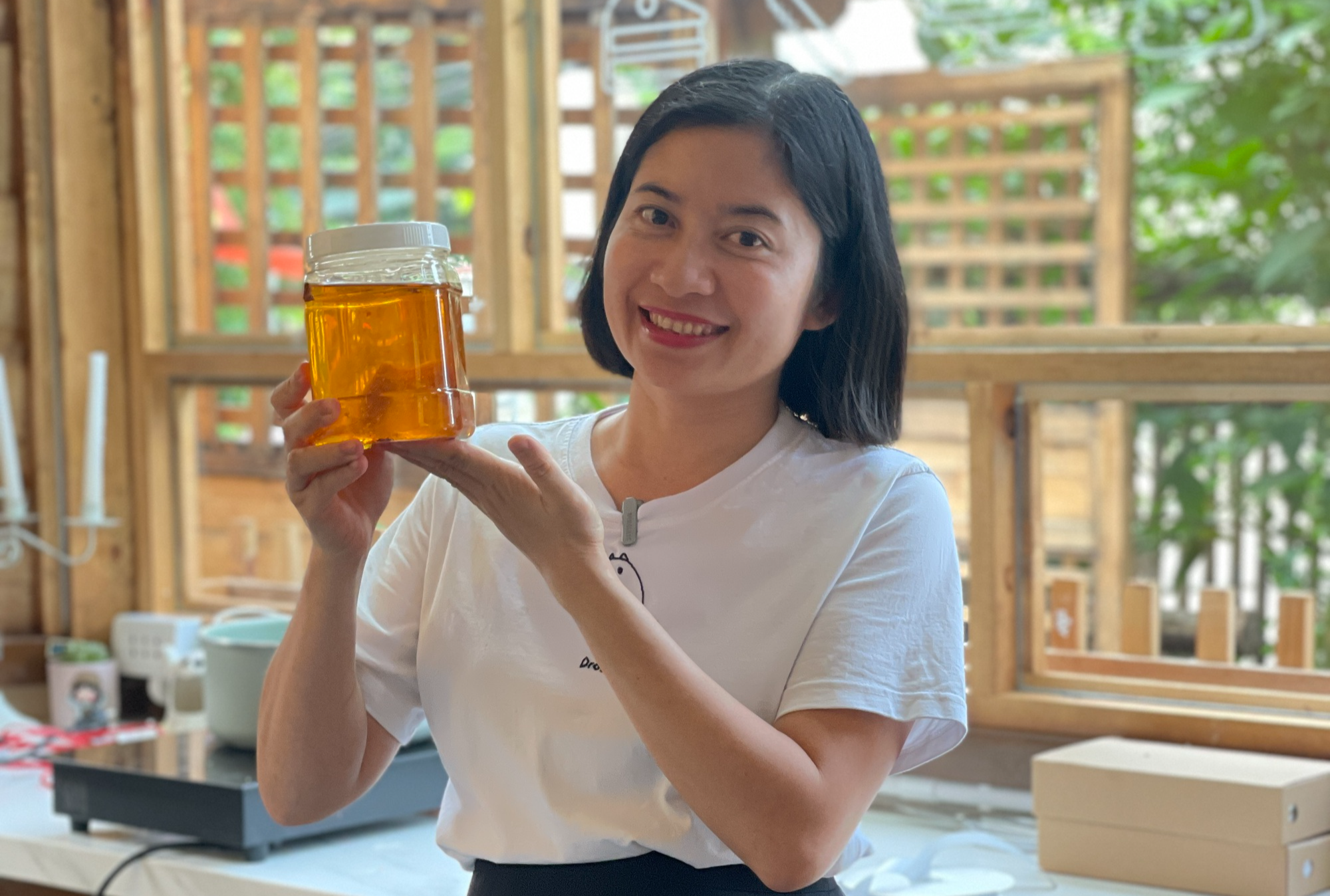
Mrs. Hang holding the jar of leftover oil collected after multiple frying sessions.
Contributor
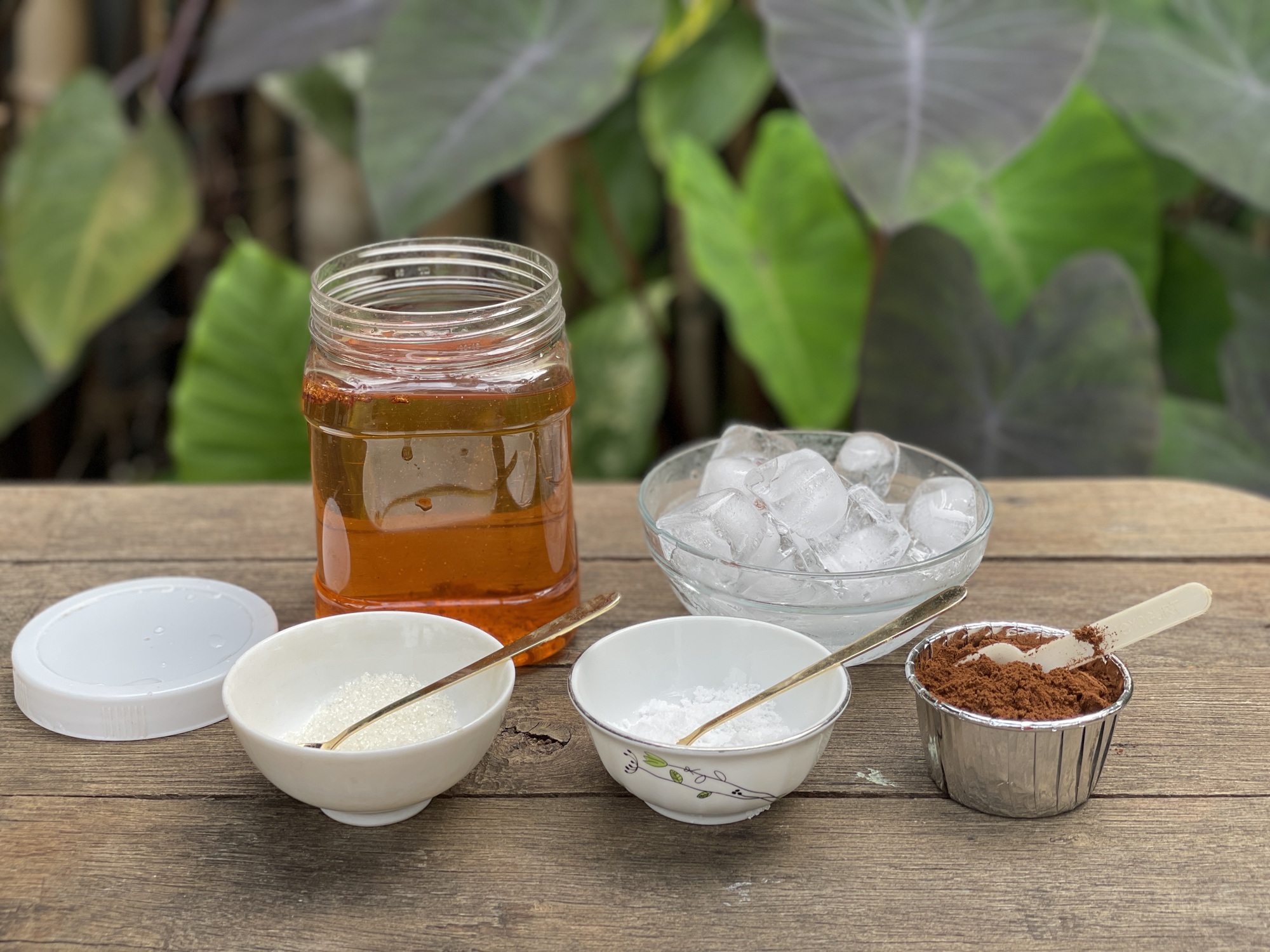
The ingredients include: 400g of waste oil; 47g of lye (NaOH); 150g of water (preferably ice water); Salt, sugar (optional); Coffee or flour; Optional essential oil (if available). Mrs. Hang bought more lye (NaOH) from online shopping sites and already had coffee, essential oil at home. The total cost is less than 50,000 VND.
Contributor
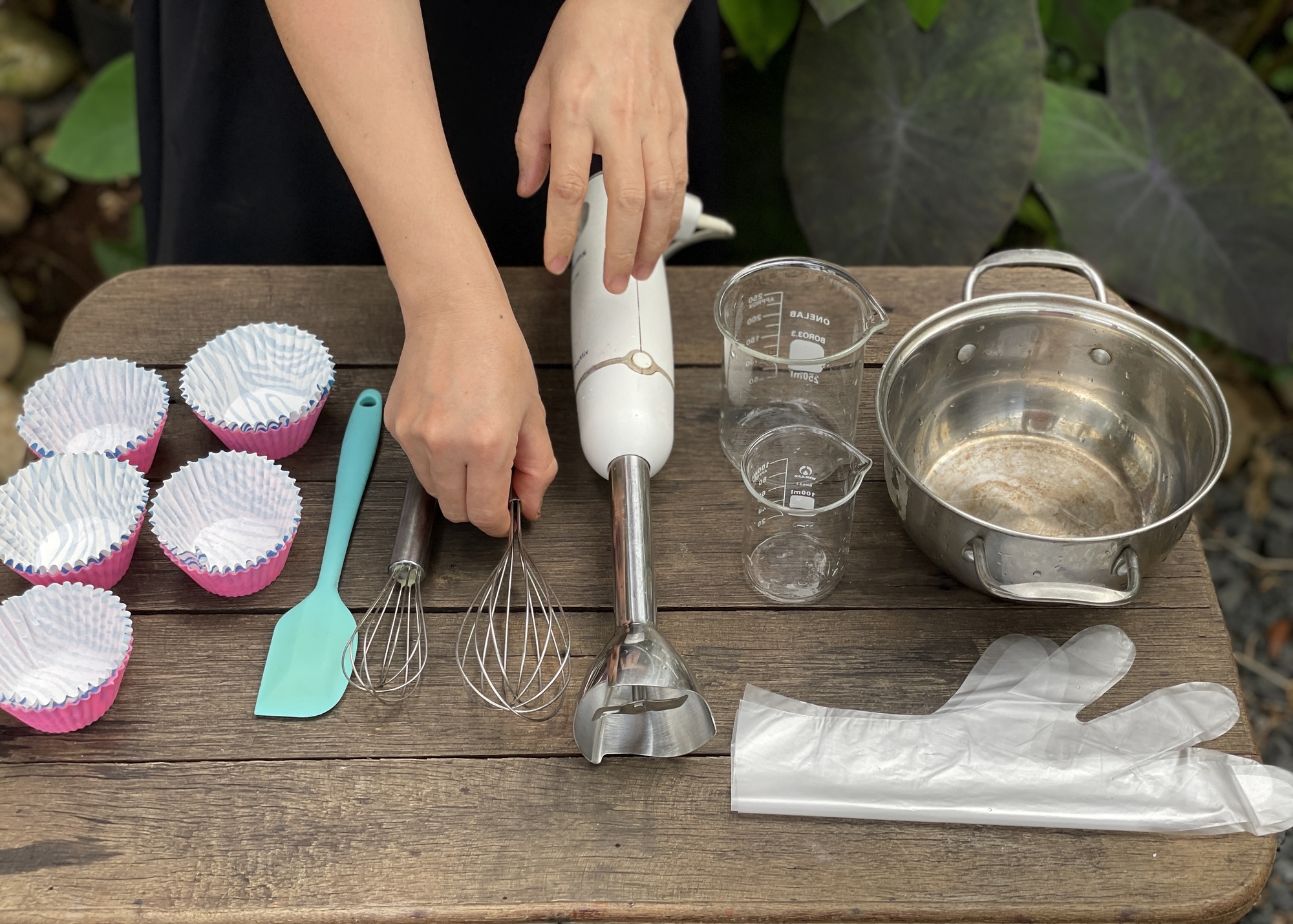
The necessary tools include: Container (can use stainless steel or plastic, not aluminum). Large and small cups for diluting lye. Hand blender (if not available, can use a whisk or egg beater). Flat spatula for scraping out all the soap. Mold (use a silicone mold for easy demolding and better-looking soap). Gloves, mask (as there will be fumes when diluting lye).
Contributor
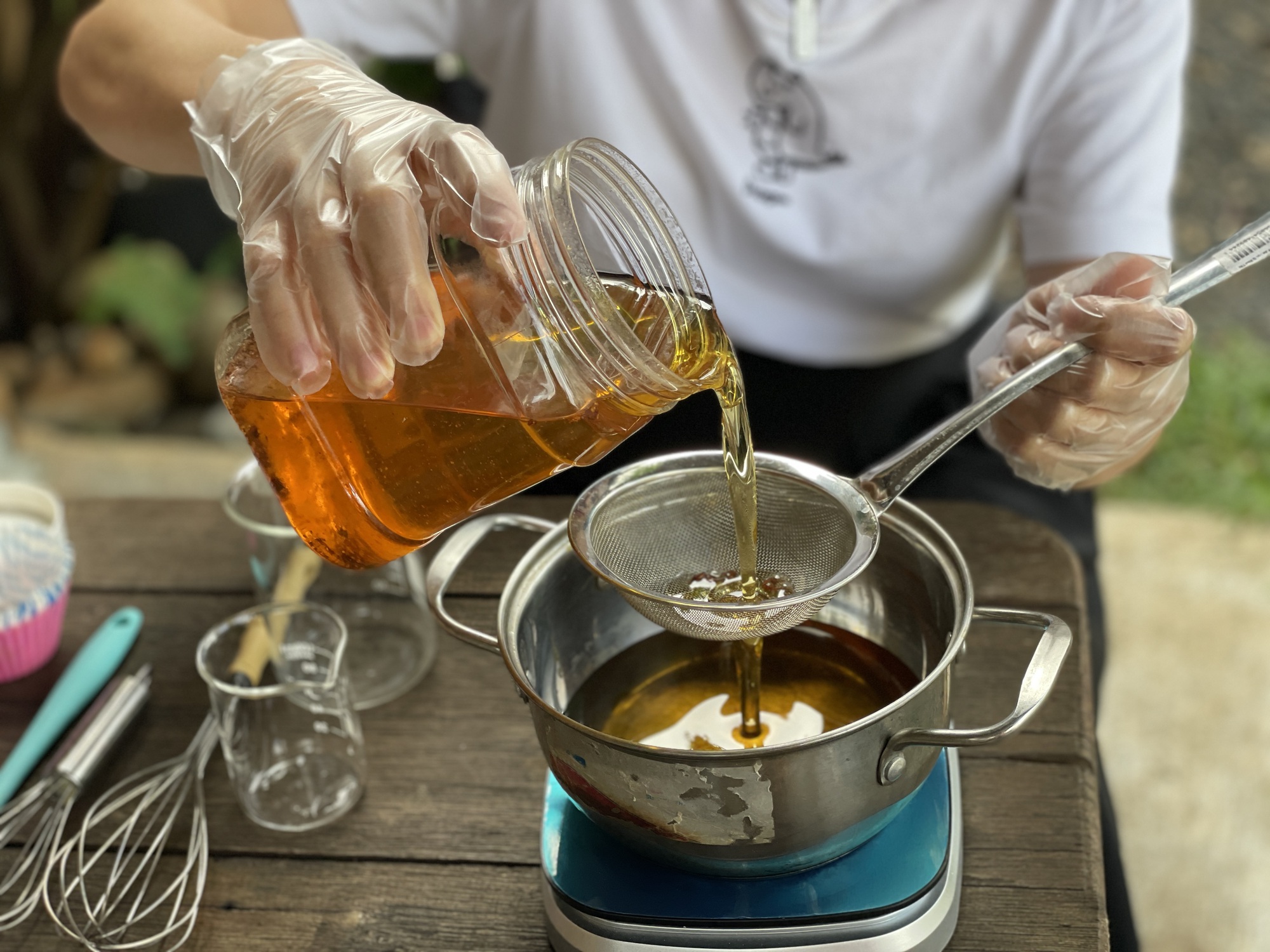
Step 1: Filter and weigh 400g of used oil.
Contributor

Step 2: Add 5 tablespoons of coffee or flour as desired to the leftover oil. Then stir the oil and coffee mixture well.
Contributor
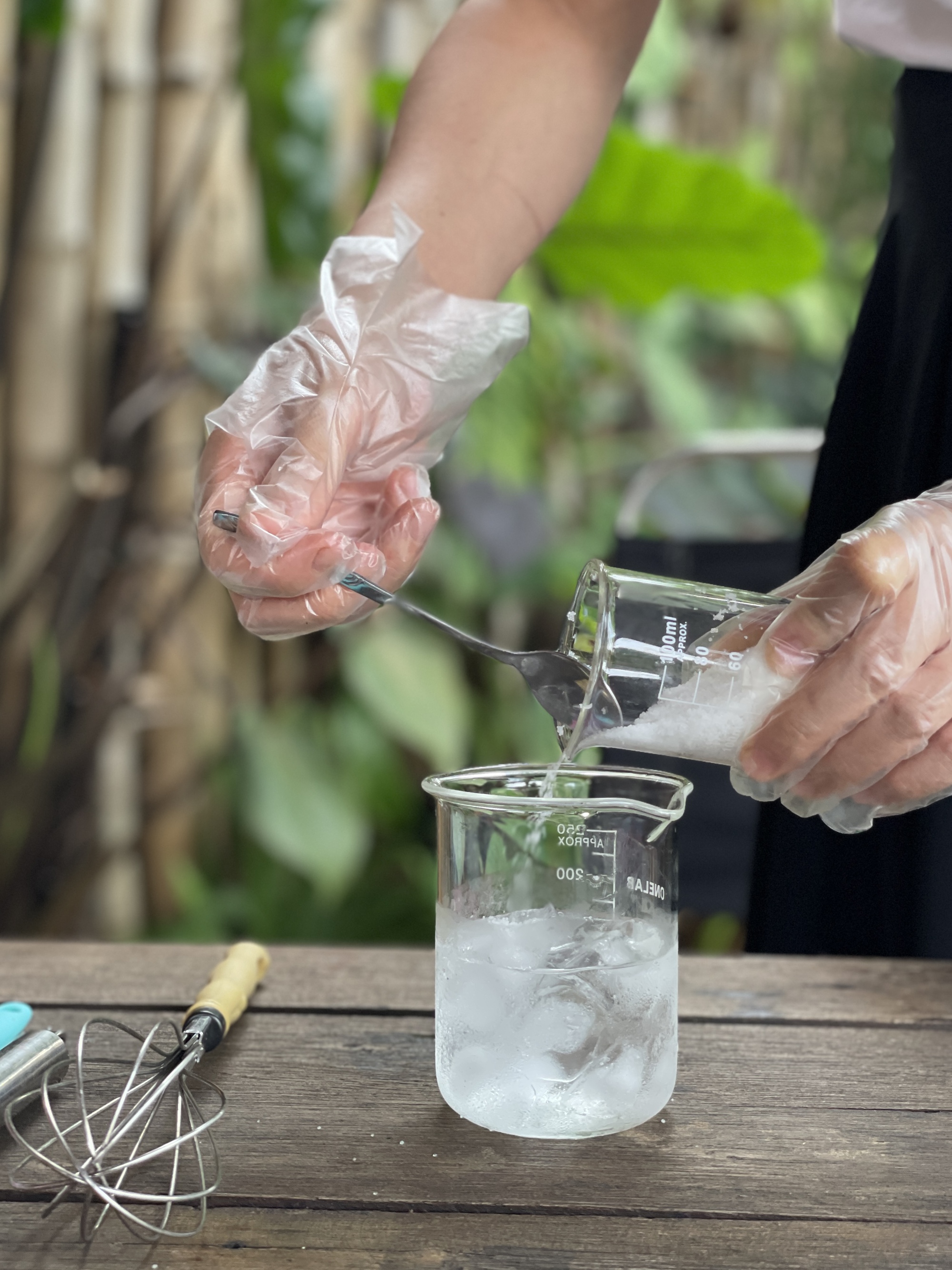
Step 3: Add 47g of lye to the water, never the other way around. Stir well to dissolve the lye, then you will have a lye solution (The lye solution will be hot, so use ice water to cool it down).
Contributor

Step 4: Add 3 tablespoons of salt to the lye solution and stir to dissolve (Salt will help make the soap harder). Step 4: Add 3 more tablespoons of sugar to the lye solution and stir well (Sugar will help create better foam for the soap).
Contributor
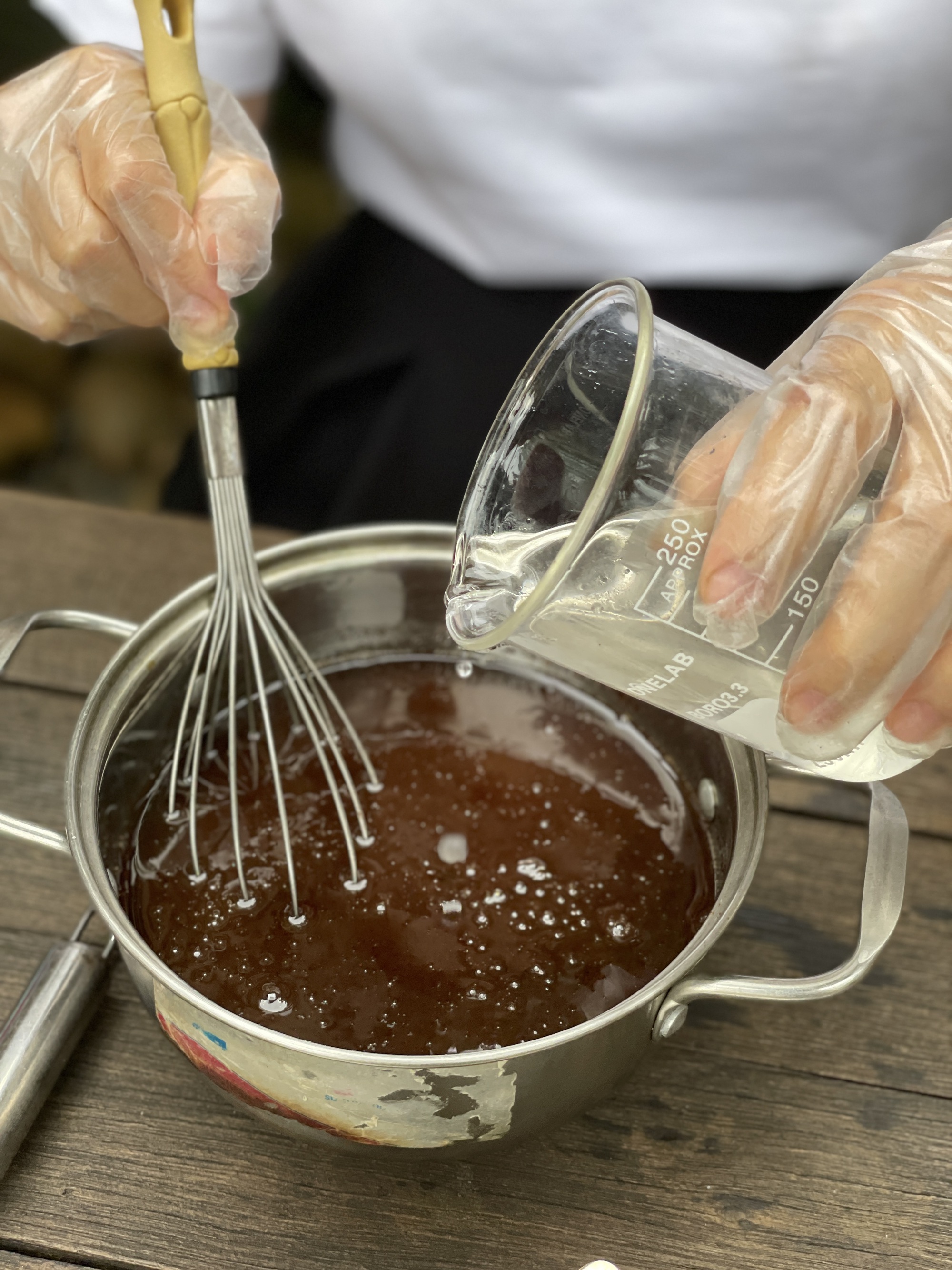
Step 5: Slowly pour the lye solution into the oil-coffee mixture, never the other way around. Pour slowly while stirring to create the saponification reaction (The lye solution will react with the fats to form soap and glycerin).
Contributor
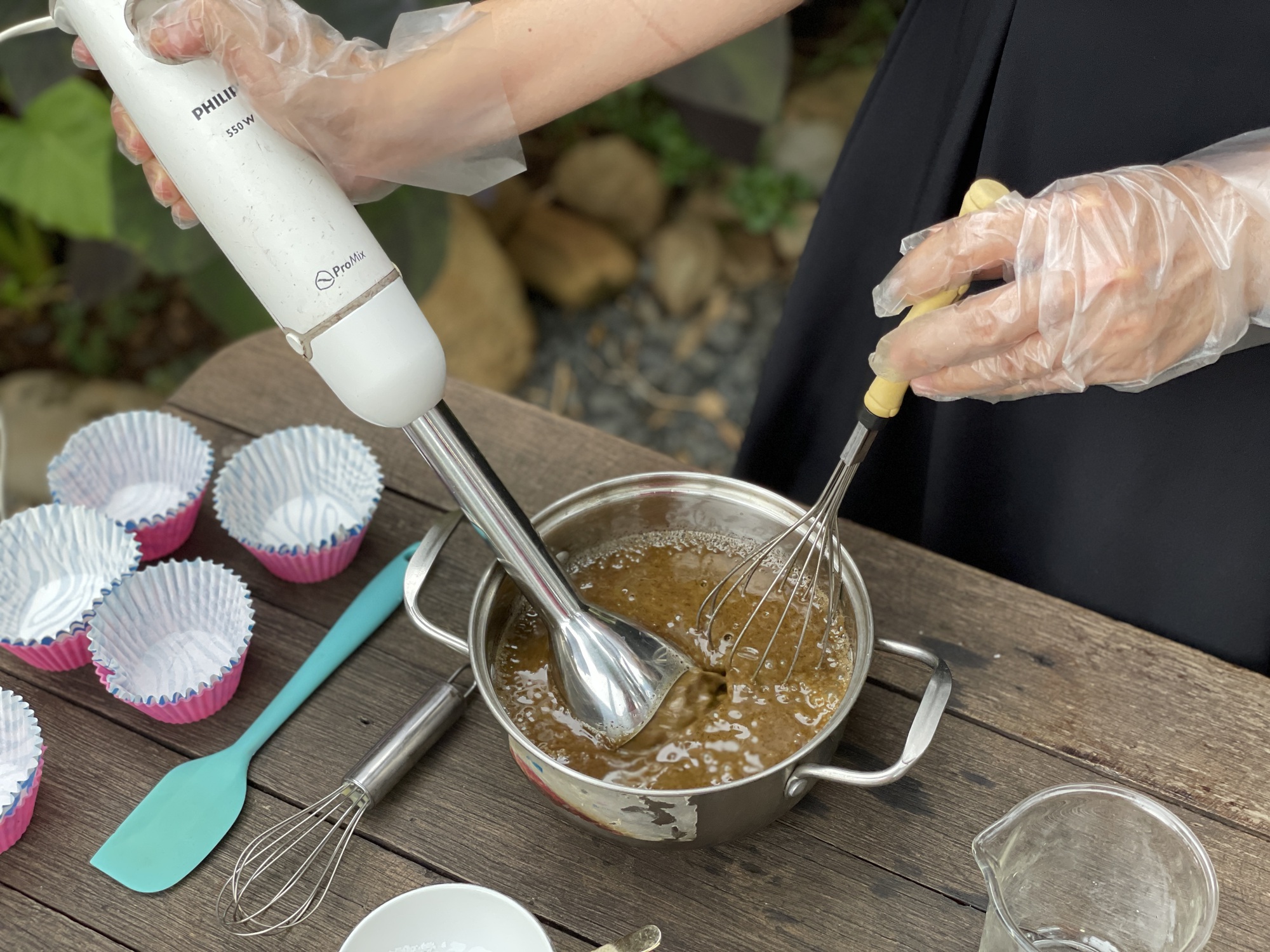
If using a whisk, it will take about 30 minutes for the reaction to start. Using a hand blender is faster, it will take around 5 minutes for the mixture to thicken. Keep whisking until the mixture thickens and creates patterns, this is when the saponification reaction is complete. At this point, you can add essential oils for fragrance.
Contributor
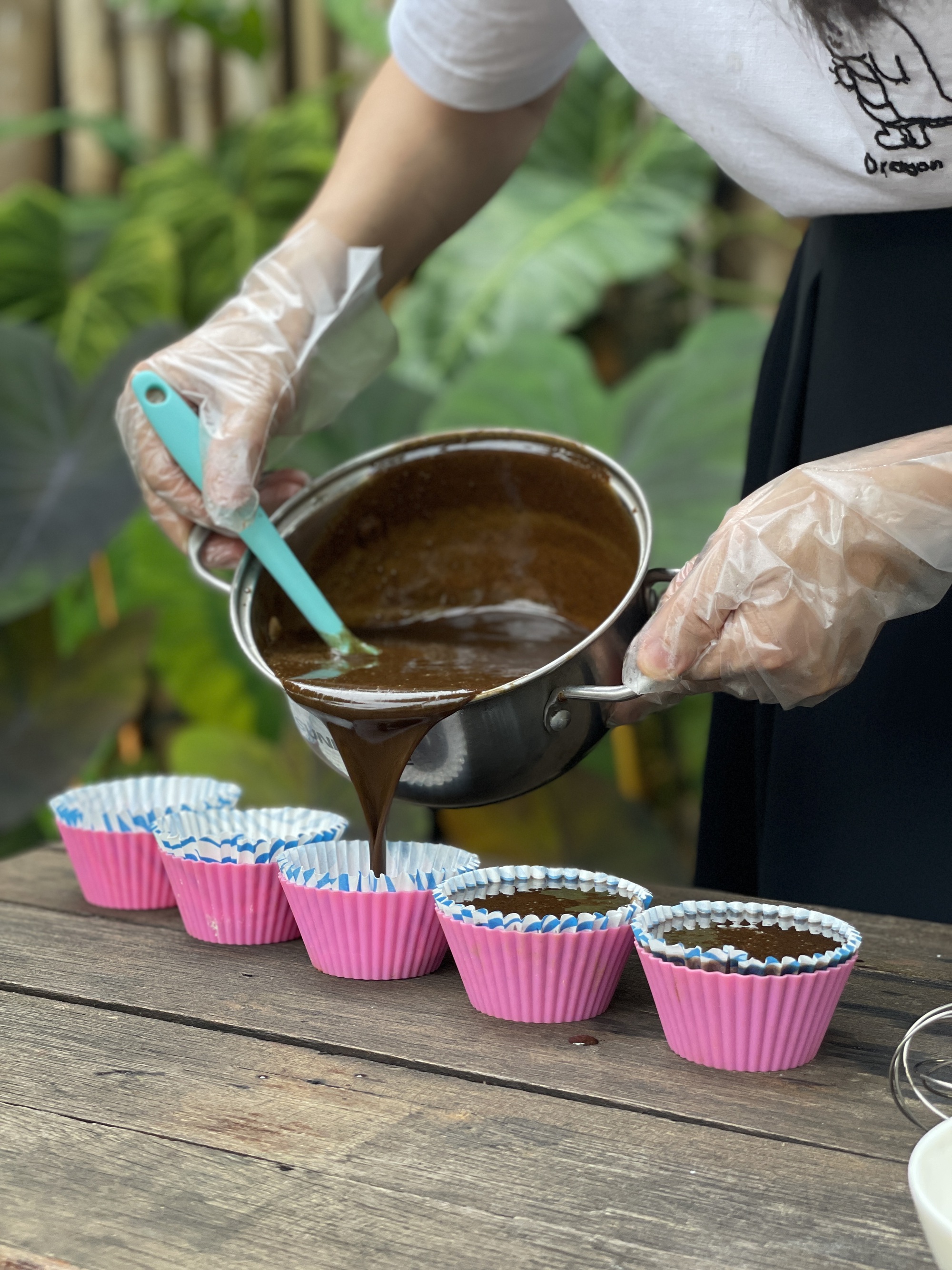
With 400g of waste oil, Mrs. Hang can make about 9 soap bars. At this stage, the soap is still very soft, so leave it for about 4 hours before moving.
Contributor
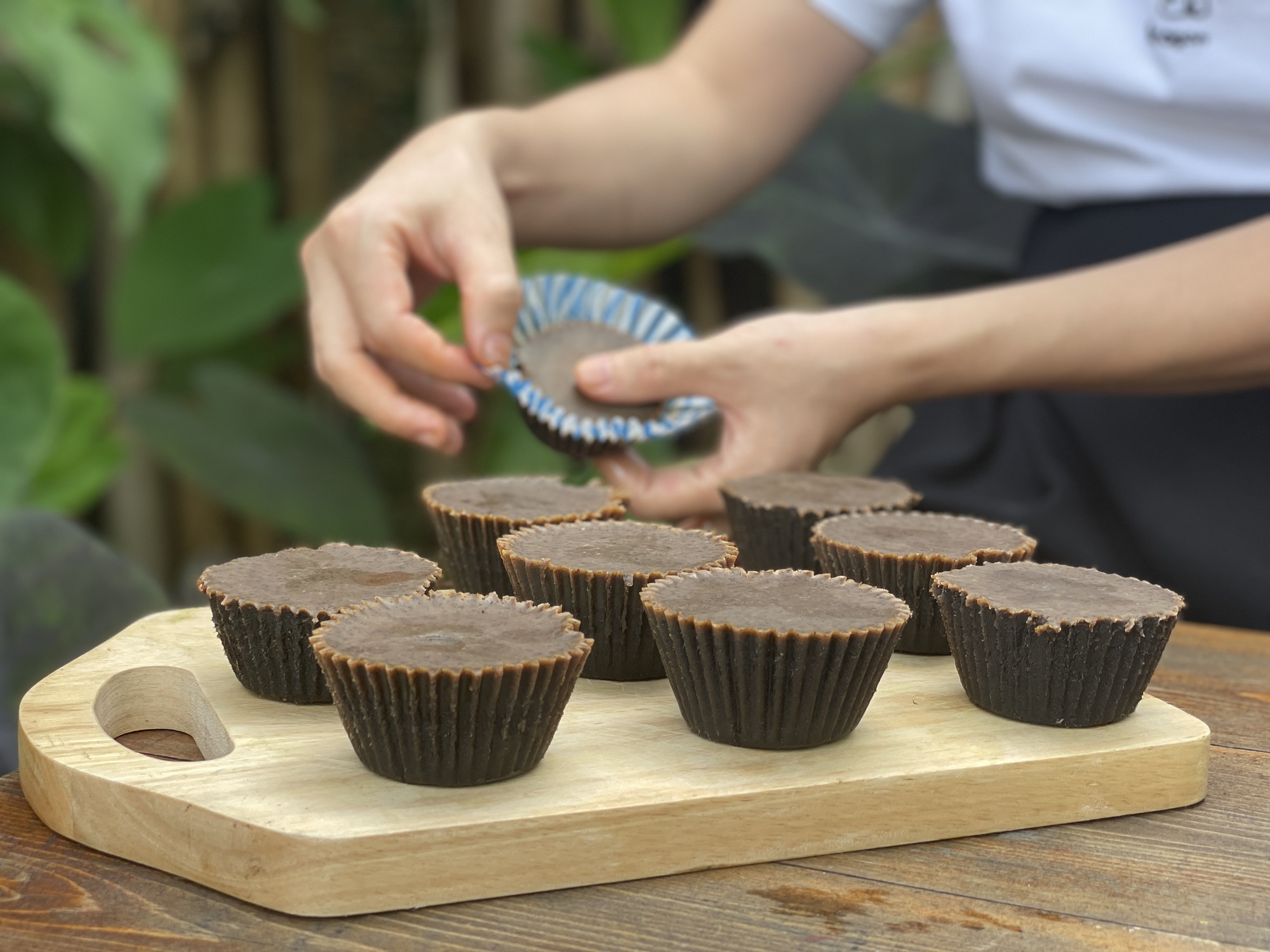
This is the soap after 1 week, it can be taken out of the mold. Note that it should be left for another 4-6 weeks before use, as that’s when the saponification reaction is complete.
Contributor
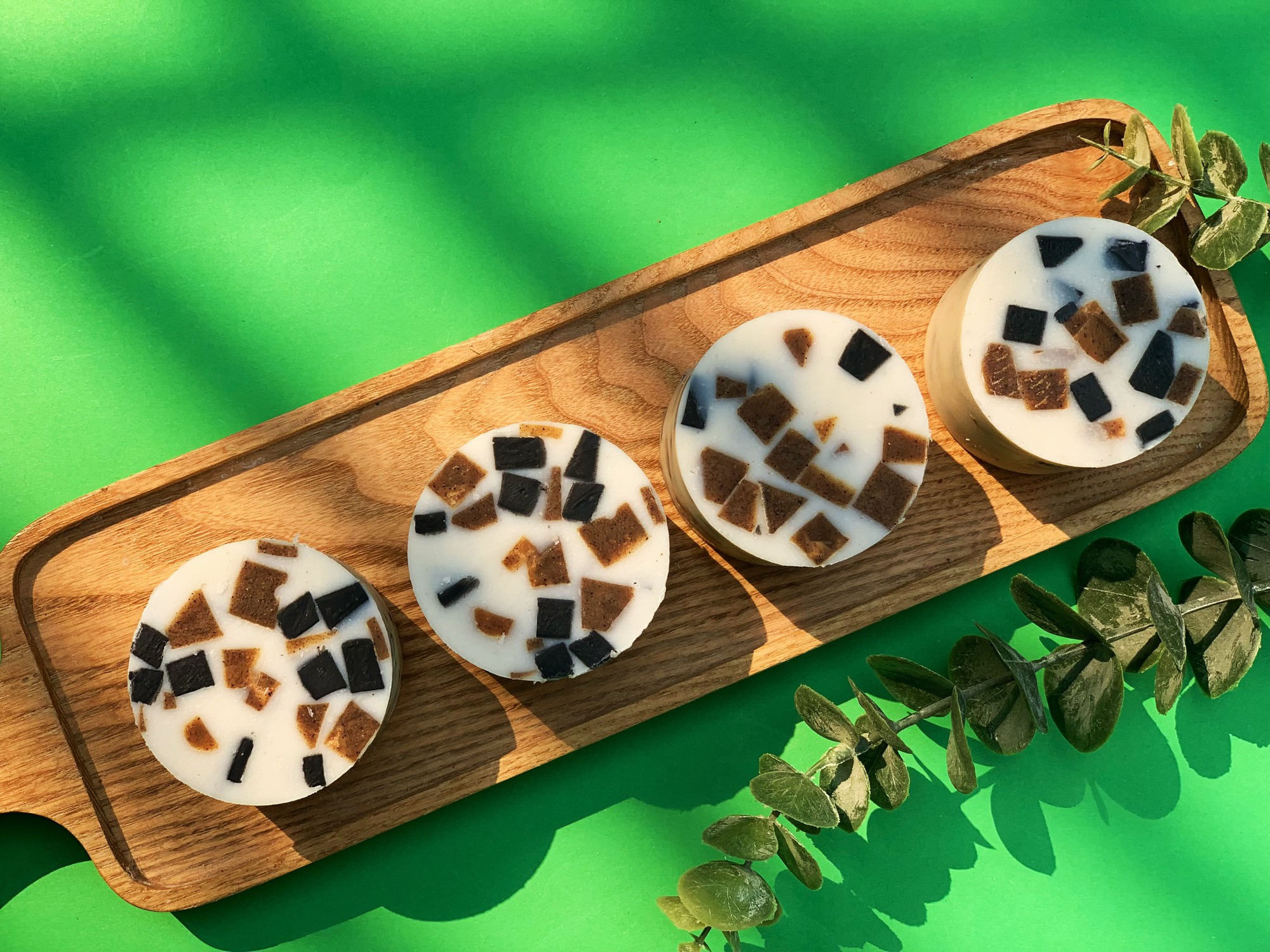
You can also make soap from coconut oil. The formula for coconut oil soap is different from other cooking oils. The ratio is as follows: 500g of coconut oil; 86g of NaOH; 190g of water; 10 – 15g of coffee powder/mineral mud/charcoal; Optional essential oil. This soap is very good for skincare and highly effective in reducing back acne.
Contributor

























